 by our College Data Analytics Team
by our College Data Analytics TeamStrayer University - Maryland total enrollment is approximately 2,760 students. 253 are undergraduates and 119 are graduate students.
Male/Female Breakdown of Undergraduates
The full-time Strayer University - Maryland undergraduate population is made up of 48% women, and 52% men.
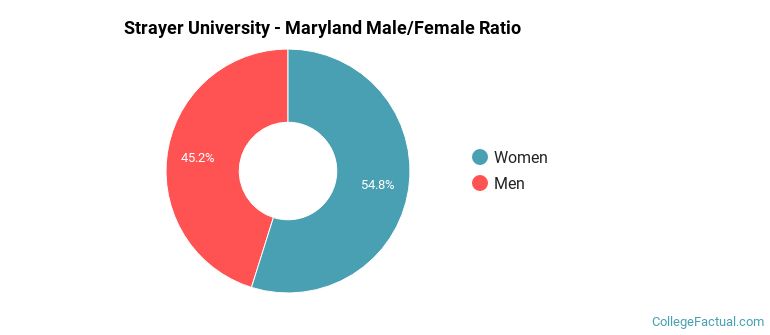
For the gender breakdown for all students, go here.
Strayer University - Maryland Racial/Ethnic Breakdown of Undergraduates
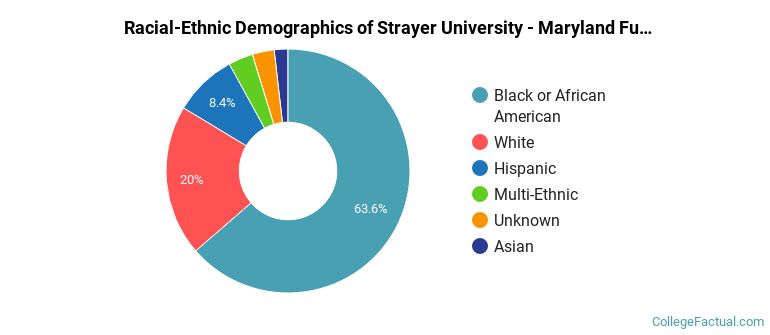
| Race/Ethnicity | Number |
|---|---|
| Black or African American | 138 |
| White | 58 |
| Hispanic | 22 |
| Multi-Ethnic | 20 |
| Asian | 7 |
| Unknown | 6 |
| International | 1 |
| Native Hawaiian or Pacific Islander | 0 |
See racial/ethnic breakdown for all students.
Male/Female Breakdown of Graduate Students
About 64% of full-time grad students are women, and 36% men.
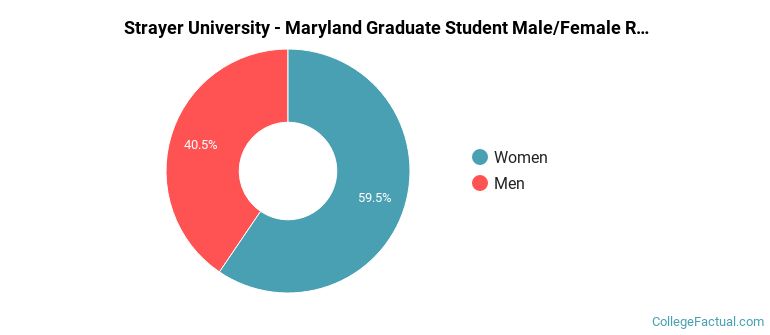
For the gender breakdown for all students, go here.
Strayer University - Maryland Racial-Ethnic Breakdown of Graduate Students
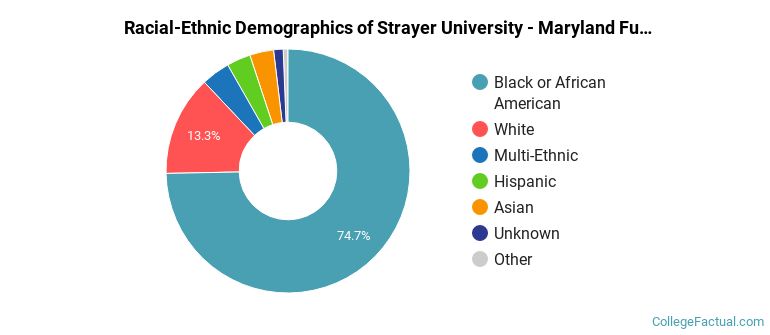
| Race/Ethnicity | Number |
|---|---|
| Black or African American | 78 |
| White | 17 |
| Hispanic | 8 |
| Multi-Ethnic | 8 |
| Asian | 6 |
| Unknown | 2 |
| Native Hawaiian or Pacific Islander | 0 |
| International | 0 |
See racial/ethnic breakdown for all students.
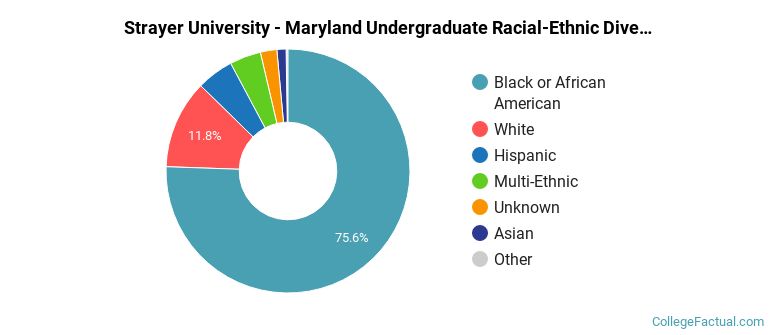
| Race/Ethnicity | Number |
|---|---|
| Black or African American | 2,022 |
| White | 367 |
| Hispanic | 137 |
| Multi-Ethnic | 132 |
| Unknown | 50 |
| Asian | 37 |
| Native Hawaiian or Pacific Islander | 2 |
| International | 1 |
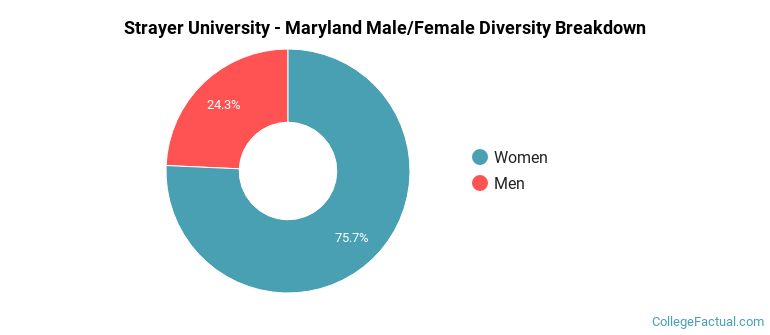
There are approximately 2,069 female students and 691 male students at Strayer University - Maryland.
Strayer University - Maryland ranks 1,889 out of 2,183 when it comes to geographic diversity.
5% of Strayer University - Maryland students come from out of state, and 0% come from out of the country.
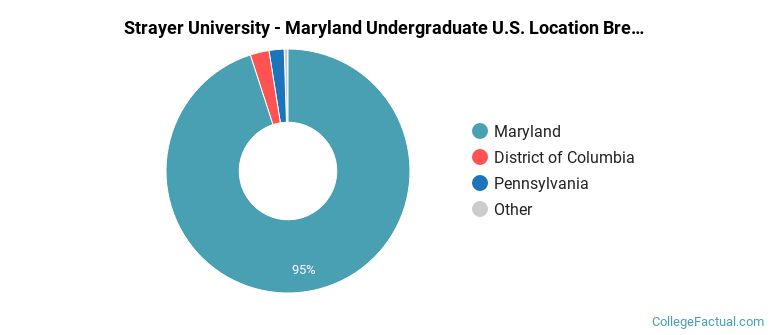
The undergraduate student body is split among 4 states (may include Washington D.C.). Click on the map for more detail.
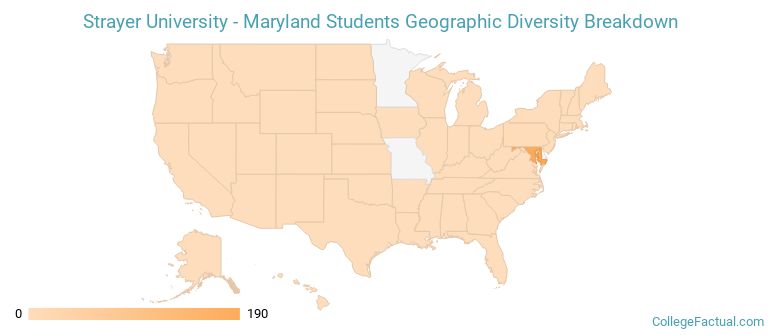
| State | Amount |
|---|---|
| Maryland | 190 |
| District of Columbia | 5 |
| Pennsylvania | 4 |
| New Jersey | 1 |
| Alaska | 0 |
Students from 32 countries are represented at this school, with the majority of the international students coming from Philippines, Pakistan, and Nepal.
Learn more about international students at Strayer University - Maryland.
A traditional college student is defined as being between the ages of 18-21. At Strayer University - Maryland, 2.85% of students fall into that category, compared to the national average of 60%.
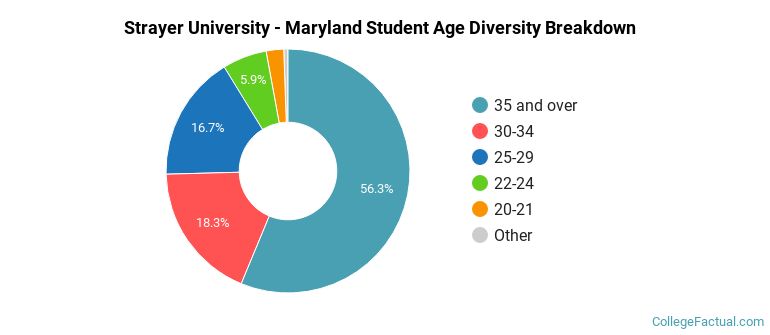
| Student Age Group | Amount |
|---|---|
| 35 and over | 1,618 |
| 30-34 | 527 |
| 25-29 | 479 |
| 22-24 | 169 |
| 20-21 | 67 |
| 18-19 | 16 |
| Under 18 | 0 |
Footnotes
*The racial-ethnic minorities count is calculated by taking the total number of students and subtracting white students, international students, and students whose race/ethnicity was unknown. This number is then divided by the total number of students at the school to obtain the racial-ethnic minorities percentage.
References
Department of Homeland Security Citizenship and Immigration Services
Learn more about how College Factual creates their Diversity Rankings.